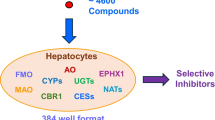Abstract
Mutations in human flavin monooxygenase-3 (hFMO3) enzyme have been implicated in the rare autosomal recessive disorder called trimethylaminuria (TMAU). In this inheritable disease, patients display elevated levels of trimethylamine (TMA) due to reduced or abolished N-oxygenation activity of the hFMO3 enzyme. TMA is a gas with characteristic fishy odour that is exuded in TMAU patients. Here, we have mapped forty-four TMAU-associated mutations on the atomic model of hFMO3, analyzed their spatial distributions and correlated these data with enzymatic implications of the mutants. The analysis suggests that hFMO3 mutations fall into distinct groups of six spatial clusters. The mutations are distributed throughout hFMO3 three-dimensional structure, and are either surface exposed or buried. In terms of catalytic activity, fifteen mutations abolish it, sixteen diminish it and the remaining thirteen mutations have not been unexplored experimentally. We have collated data on known xenobiotics and metabolites that interact with hFMO3 that can either serve as competitive inhibitors or drive production of secondary metabolites. The present study also reveals biochemical linkages between hFMO3 and few commonly used human drugs. These analyses thus provide a structural platform for understanding hFMO3 mutations and their enzymatic activities within the TMAU disease phenotype.




Similar content being viewed by others
References
Ziegler D (1980) Microsomal flavin-containing monooxygenase: oxygenation of nucleophilic nitrogen and sulfur compounds. Enzym. Basis Detoxication 1:201–277
Cashman JR (2001) Enzyme systems that metabolise drugs and other xenobiotics. In: Flavin Monooxygenases, p 67
Ziegler DM (2002) An overview of the mechanism, substrate specificities, and structure of FMOs. Drug Metab Rev 34:503–511
Hernandez D, Janmohamed A, Chandan P, Phillips IR, Shephard EA (2004) Organization and evolution of the flavin-containing monooxygenase genes of human and mouse: identification of novel gene and pseudogene clusters. Pharmacogenetics 14:117–130
Hines RN, Hopp K, Franco J, Saeian K, Begun FP (2002) Alternative processing of the human FMO6 gene renders transcripts incapable of encoding a functional flavin-containing monooxygenase. Mol Pharmacol 62:320–325
Hukkanen J, Dempsey D, Jacob P, Benowitz NL (2005) Effect of pregnancy on a measure of FMO3 activity. Br J Clin Pharmacol 60:224–226
Chhibber-goel J, Singhal V, Parakh N, Bhargava B, Sharma A (2014) The metabolite trimethylamine-N-oxide is an emergent biomarker of human health. Curr Med Chem 1:1–18
Chen Y, Patel N, Crombie A, Scrivens JH, Murrell J (2011) Bacterial flavin-containing monooxygenase is trimethylamine monooxygenase. Proc Natl Acad Sci 108:17791–17796
Lang DH, Yeung CK, Peter RM, Ibarra C, Gasser R, Itagaki K et al (1998) Isoform specificity of trimethylamine N-oxygenation by human flavin-containing monooxygenase (FMO) and P450 enzymes Selective catalysis by FMO3. Biochem Pharmacol 56:1005–1012
Chhibber-Goel J, Gaur A, Singhal V, Parakh N, Bhargava B, Sharma A (2016) The complex metabolism of trimethylamine in humans: endogenous and exogenous sources. Expert Rev Mol Med 18:e8. doi:10.1017/erm.2016.6
Motika MS, Zhang J, Cashman JR (2007) Flavin-containing monooxygenase 3 and human disease. Expert Opin Drug Metab Toxicol 3:831–845
Craciun S, Marks J, Balskus E (2014) Characterization of choline trimethylamine-lyase expands the chemistry of glycyl radical enzymes. Am Chem Soc Biol 18:1408–1413
Emsley P, Lohkamp B, Scott WG, Cowtan K (2010) Features and development of Coot. Acta Crystallogr Sect D: Biol Crystallogr 66:486–501
Pettersen EF, Goddard TD, Huang CC, Couch GS, Greenblatt DM, Meng EC et al (2004) UCSF Chimera—a visualization system for exploratory research and analysis. J Comput Chem 25:1605–1612
Hephard EAS (1996) Localization of human flavin-containing monooxygenase genes FMO2 and FMO5 to chromosome 1q. Biochem Genet 429:426–429
Fraaije MW, Kamerbeek NM, Van Berkel WJH, Janssen DB (2002) Identification of a Baeyer–Villiger monooxygenase sequence motif. FEBS Lett 518:43–47
Zhang J, Tran Q, Lattard V, Cashman JR (2003) Deleterious mutations in the flavin-containing monooxygenase 3 (FMO3) gene causing trimethylaminuria. Pharmacogenetics 13:495–500
Kubota M, Nakamoto Y, Nakayama K, Ujjin P, Satarug S, Mushiroda T et al (2002) A mutation in the flavin-containing monooxygenase 3 gene and its effects on catalytic activity for N-oxidation of trimethylamine in vitro. Drug Metab Pharmacokinet 17:207–213
Dolphin CT, Janmohamed A, Smith RL, Shephard EA, Phillips IR (2000) Compound heterozygosity for missense mutations in the flavin-containing monooxygenase 3 (FMO3) gene in patients with fish-odour syndrome. Pharmacogenetics 10:799–807
Park CS, Chung WG, Kang JH, Roh HK, Lee KH, Cha YN (1999) Phenotyping of flavin-containing monooxygenase using caffeine metabolism and genotyping of FMO3 gene in a Korean population. Pharmacogenetics 9:155–164
Chalmers RA, Bain MD, Michelakakis H, Zschocke J, Iles RA (2006) Diagnosis and management of trimethylaminuria (FMO3 deficiency) in children. J Inherit Metab Dis 29:162–172
Shimizu M, Fujita H, Aoyama T, Yamazaki H (2006) Three novel single nucleotide polymorphisms of the FMO3 gene in a Japanese population. Drug Metab Pharmacokinet 21:245–247
Krueger SK, Williams DE (2005) Mammalian flavin-containing monooxygenases: structure/function, genetic polymorphisms and role in drug metabolism. Pharmacol Ther 106:357–387
Larsen-Su S, Williams D (1996) Dietary indole-3-carbinol inhibits FMO activity and the expression of flavin-containing monooxygenase form 1 in rat liver and intestine. Drug Metab Dispos 24:927–931
Nace C, Genter M, Sayre L, Crofton K (1997) Effect of methimazole, an FMO substrate and competitive inhibitor, on the neurotoxicity of 3,3′-iminodipropionitrile in male rats. Fundam Appl Toxicol 37:131–140
Connor DT, Roark WH, Sexton K, Sorenson RJ (2005) Thiourea and benzamide compounds, composition and methods of treating or preventing inflammatory diseases and atherosclerosis. Expert Opin Ther Pat 245–249. doi:10.1517/13543776.10.2.245
Miao J, Ling AV, Manthena PV, Gearing ME, Graham MJ, Crooke RM et al (2015) Flavin-containing monooxygenase 3 as a potential player in diabetes-associated atherosclerosis. Nat Commun 6:6498
Khan S, Garg A, Camacho N, Van Rooyen J, Kumar Pole A, Belrhali H et al (2013) Structural analysis of malaria-parasite lysyl-tRNA synthetase provides a platform for drug development. Acta Crystallogr Sect D: Biol Crystallogr 69:785–795
Sati SP, Singh SK, Kumar N, Sharma A (2002) Extra terminal residues have a profound effect on the folding and solubility of a Plasmodium falciparum sexual stage-specific protein over-expressed in Escherichia coli. Eur J Biochem 269:5259–5263
Sharma A, Sharma A (2011) Fatty acid induced remodeling within the human liver fatty acid-binding protein. J Biol Chem 286:31924–31928
Teresa E, Lonardo F, Fiumara A, Lombardi C, Russo P, Zuppi C, Scarano G, Musumeci S, Gianfrancesco F (2006) A spectrum of molecular variation in a cohort of Italian families with trimethylaminuria: identification of three novel mutations of the FMO3 gene. Mol Genet Metab 88:192–195
Mazón Ramos A, Gil-Setas A, Berrade Zubiri S, Bandrés Echeverri T, Wevers R, Engelke U, Zschocke J (2003) Primary trimethylaminuria or fish odor syndrome. A novel mutation in the first documented case in Spain. Med Clin 120:219–221
Akerman BR, Lemass H, Chow LM, Lambert DM, Greenberg C, Bibeau C et al (1999) Trimethylaminuria is caused by mutations of the FMO3 gene in a North American cohort. Mol Genet Metab 68:24–31
Yeunga CK, Admanb ET, Rettie AE (2007) Functional characterization of genetic variants of human FMO3 associated with trimethylaminuria. Arch Biochem Biophys 464:251–259
Shimizu M, Tomioka S, Murayama NYH (2007) Missense and nonsense mutations of the flavin-containing monooxygenase 3 gene in a Japanese cohort. Drug Metab Pharmacokinet 22:61–64
Furnes B, Schlenk D (2004) Evaluation of xenobiotic N- and S-oxidation by variant flavin-containing monooxygenase 1 (FM01) enzymes. Toxicol Sci 78:196–203
Basarab T, Ashton GH, Menagé HPMJ (1999) Sequence variations in the flavin-containing mono-oxygenase 3 gene (FMO3) in fish odour syndrome. Br J Dermatol 140:164–167
Allerston CK, Vetti HH, Houge G, Phillips IR, Shephard EA (2009) A novel mutation in the flavin-containing monooxygenase 3 gene (FMO3) of a Norwegian family causes trimethylaminuria. Mol Genet Metab 98:198–202
Yeung CK, Rettie AE (2006) Benzydamine N-oxygenation as a measure of flavin-containing monooxygenase activity. Biol Methods Mol 320:157–162
Yamazaki H, Fujita H, Gunji T, Zhang J, Kamataki T, Cashman JR et al (2007) Stop codon mutations in the flavin-containing monooxygenase 3 (FMO3) gene responsible for trimethylaminuria in a Japanese population. Mol Genet Metab 90:58–63
Zschocke J, Kohlmueller D, Quak E, Meissner T, Hoffmann GF, Mayatepek E (1999) Mild trimethylaminuria caused by common variants in FMO3 gene. Lancet 354:834–835
Fujieda M, Yamazaki H, Togashi M, Saito TKT (2003) Two novel single nucleotide polymorphisms (SNPs) of the FMO3 gene in Japanese. Drug Metab Pharmacokinet 18:333–335
Preeti G, Ubriani R, Kim J (2002) Identification of a novel R223Q missense mutation in the flavin-containing monooxygenase 3 gene in trimethylaminuria. J Invest Dermatol 119:244
Cashman JR (2002) Human flavin-containing monooxygenase (form 3): polymorphisms and variations in chemical metabolism. Pharmacogenomics 3:325–339
Furnes B, Feng J, Sommer SS, Schlenk D (2003) Identification of novel variants of the flavin-containing monooxygenase gene family in African Americans. Drug Metab Dispos 31:187–193
Koukouritaki S, Poch M, Henderson M, Siddens L, Krueger S, VanDyke J et al (2007) Identification and functional analysis of common human flavin-containing monooxygenase 3 genetic variants. J Pharmacol Exp Ther 320:266–273
Shimizu M, Allerston C, Shephard E, Yamazaki H, Phillips I (2014) Relationships between flavin-containing mono-oxygenase 3 (FMO3) genotype and trimethylaminuria phenotype in a Japanese population. Br J Clin Pharmacol 77:839–851
D’Angelo R, Esposito T, Calabr M, Rinaldi C, Robledo R, Varriale B et al (2013) FMO3 allelic variants in Sicilian and Sardinian populations: trimethylaminuria and absence of fish-like body odor. Gene 515:410–415
Acknowledgements
This work was supported by JC Bose fellowship to Amit P. Sharma. One of the authors is supported by CSIR fellowship. The authors thank CB Indus, I Pantig and AG for constant encouragement. All the authors reviewed and approved the final version of the manuscript.
Author information
Authors and Affiliations
Corresponding author
Ethics declarations
Conflict of interest
The authors declare that they have no conflict of interest with the contents of this article.
Additional information
Significance statement The human flavin monooxygenase 3 enzyme is linked to numerous diseases via its product trimethylamine-N-oxide. In the present study, the authors provide insights that reinforce the significance of understanding hFMO3 mutations and their effect on enzymatic activity.
Rights and permissions
About this article
Cite this article
Chhibber-Goel, J., Singhal, V., Gaur, A. et al. Structure–Function Analysis of Liver Flavin Monooxygenase 3 that Drives Trimethylaminuria in Humans. Proc. Natl. Acad. Sci., India, Sect. B Biol. Sci. 88, 1681–1690 (2018). https://doi.org/10.1007/s40011-017-0913-5
Received:
Revised:
Accepted:
Published:
Issue Date:
DOI: https://doi.org/10.1007/s40011-017-0913-5




